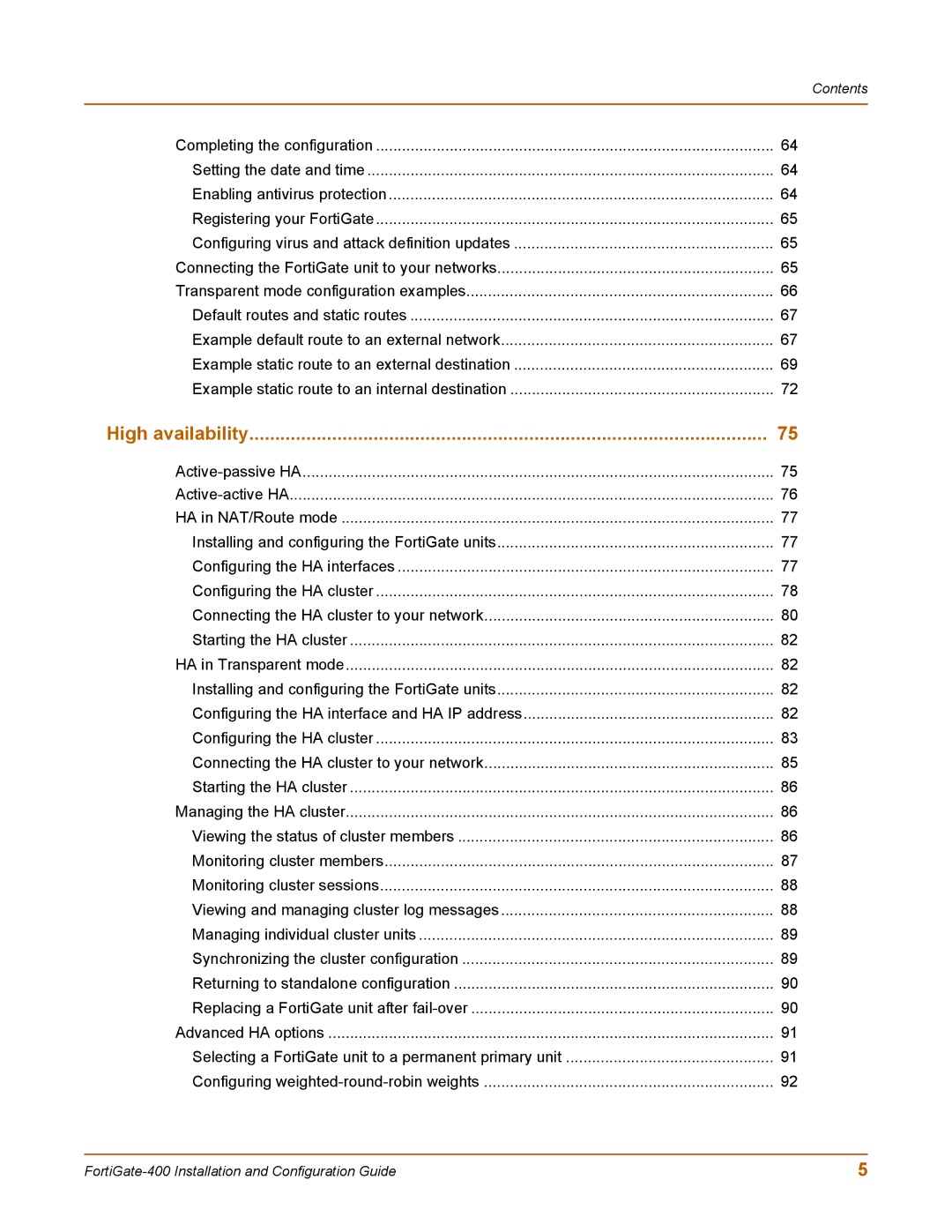
Contents
Completing the configuration | 64 |
Setting the date and time | 64 |
Enabling antivirus protection | 64 |
Registering your FortiGate | 65 |
Configuring virus and attack definition updates | 65 |
Connecting the FortiGate unit to your networks | 65 |
Transparent mode configuration examples | 66 |
Default routes and static routes | 67 |
Example default route to an external network | 67 |
Example static route to an external destination | 69 |
Example static route to an internal destination | 72 |
High availability | 75 |
75 | |
76 | |
HA in NAT/Route mode | 77 |
Installing and configuring the FortiGate units | 77 |
Configuring the HA interfaces | 77 |
Configuring the HA cluster | 78 |
Connecting the HA cluster to your network | 80 |
Starting the HA cluster | 82 |
HA in Transparent mode | 82 |
Installing and configuring the FortiGate units | 82 |
Configuring the HA interface and HA IP address | 82 |
Configuring the HA cluster | 83 |
Connecting the HA cluster to your network | 85 |
Starting the HA cluster | 86 |
Managing the HA cluster | 86 |
Viewing the status of cluster members | 86 |
Monitoring cluster members | 87 |
Monitoring cluster sessions | 88 |
Viewing and managing cluster log messages | 88 |
Managing individual cluster units | 89 |
Synchronizing the cluster configuration | 89 |
Returning to standalone configuration | 90 |
Replacing a FortiGate unit after | 90 |
Advanced HA options | 91 |
Selecting a FortiGate unit to a permanent primary unit | 91 |
Configuring | 92 |
5 |
